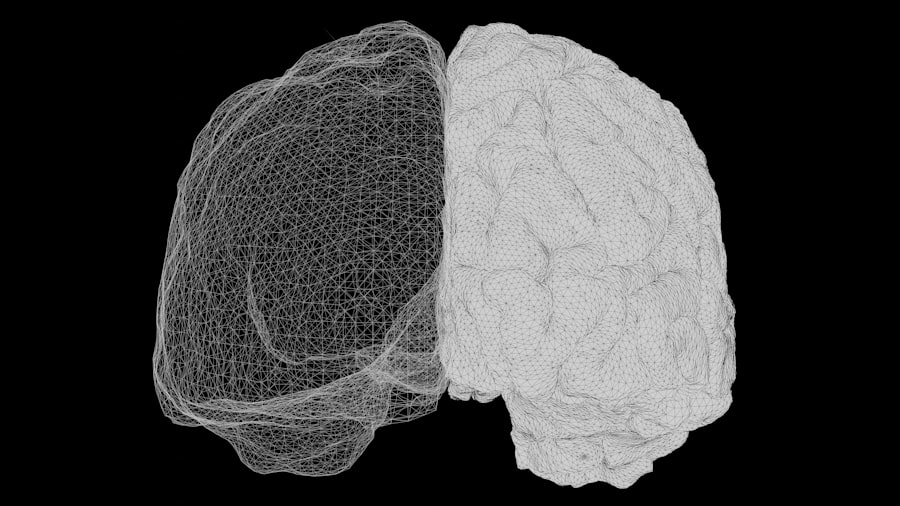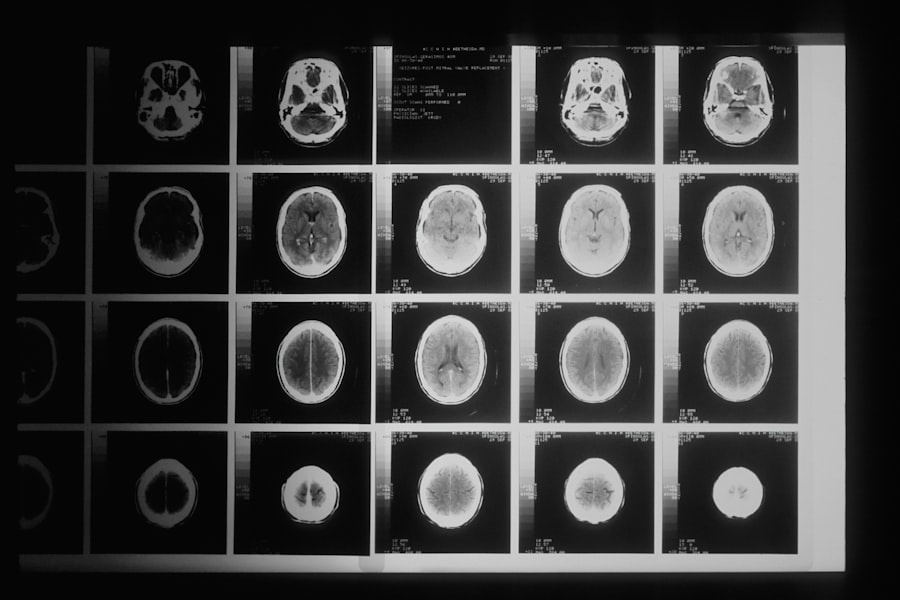Neuroplasticity is a fascinating concept that refers to the brain’s remarkable ability to reorganize itself by forming new neural connections throughout life. This adaptability allows you to learn new skills, recover from injuries, and even change your thought patterns. When it comes to anxiety, understanding neuroplasticity can be particularly empowering.
Anxiety often manifests as a series of negative thought patterns and emotional responses that can feel overwhelming. However, by harnessing the principles of neuroplasticity, you can actively work to reshape these patterns and cultivate a more balanced emotional state. As you delve deeper into the relationship between neuroplasticity and anxiety, you may find that your brain is not a static organ but rather a dynamic entity capable of change.
This means that the neural pathways associated with anxiety can be altered through intentional practice and experience. By recognizing that your brain can adapt and evolve, you can begin to take proactive steps toward managing anxiety more effectively. This understanding lays the groundwork for exploring various techniques and exercises that leverage neuroplasticity to foster resilience and emotional well-being.
Key Takeaways
- Neuroplasticity allows the brain to rewire itself, offering hope for anxiety reduction
- Science shows that neuroplasticity exercises can help rewire the brain and reduce anxiety
- Benefits of neuroplasticity exercises include improved mood and reduced anxiety symptoms
- Mindfulness meditation is a powerful neuroplasticity exercise for reducing anxiety
- Cognitive behavioral therapy techniques can help rewire the brain and reduce anxiety
The Science Behind Neuroplasticity and Anxiety
The science of neuroplasticity reveals that your brain is constantly rewiring itself in response to experiences, thoughts, and behaviors. When you experience anxiety, certain neural pathways become reinforced, making it easier for anxious thoughts to arise in the future. This cycle can create a feedback loop where anxiety begets more anxiety, leading to heightened distress.
However, research shows that through targeted interventions, you can disrupt this cycle and create new pathways that promote calmness and resilience. Studies have demonstrated that engaging in specific activities can lead to structural changes in the brain. For instance, practices such as mindfulness meditation have been shown to increase gray matter density in areas associated with emotional regulation.
Similarly, cognitive behavioral therapy (CBT) techniques can help you identify and challenge negative thought patterns, effectively rewiring your brain’s response to anxiety-inducing situations. By understanding the underlying science, you can appreciate the potential for change and growth within yourself.
Benefits of Neuroplasticity Exercises for Anxiety Reduction

Engaging in neuroplasticity exercises offers a multitude of benefits for reducing anxiety. One of the most significant advantages is the ability to create new, healthier thought patterns that replace the old, maladaptive ones. As you practice these exercises consistently, you may notice a gradual shift in your emotional responses and an increased sense of control over your anxiety.
This newfound empowerment can lead to greater confidence in facing challenging situations. Moreover, neuroplasticity exercises often promote mindfulness and self-awareness, which are crucial components in managing anxiety. By becoming more attuned to your thoughts and feelings, you can develop a deeper understanding of your triggers and responses.
This awareness allows you to respond to anxiety with greater clarity and intention rather than reacting impulsively. Ultimately, the benefits of these exercises extend beyond anxiety reduction; they can enhance your overall mental well-being and quality of life.
Neuroplasticity Exercises to Rewire the Brain and Reduce Anxiety
| Exercise | Benefits |
|---|---|
| Mindfulness meditation | Reduces anxiety, improves focus and attention |
| Deep breathing exercises | Calms the nervous system, reduces stress |
| Cognitive behavioral therapy | Rewire negative thought patterns, reduce anxiety symptoms |
| Physical exercise | Increases neuroplasticity, reduces anxiety and depression |
To effectively rewire your brain and reduce anxiety, it’s essential to engage in exercises that stimulate neuroplasticity. One powerful approach is through repetitive practice of new skills or behaviors. For instance, if you struggle with social anxiety, intentionally placing yourself in social situations—even if they feel uncomfortable—can help create new neural pathways associated with positive social interactions.
Over time, these experiences can diminish the intensity of your anxiety response. Another effective exercise involves visualization techniques. By vividly imagining yourself successfully navigating anxiety-provoking situations, you can create a mental blueprint for success.
This practice not only helps reduce anticipatory anxiety but also reinforces positive outcomes in your mind. As you visualize these scenarios repeatedly, your brain begins to recognize them as familiar and achievable, further diminishing the grip of anxiety.
Mindfulness Meditation as a Neuroplasticity Exercise for Anxiety Reduction
Mindfulness meditation is one of the most widely recognized neuroplasticity exercises for anxiety reduction. This practice encourages you to focus on the present moment without judgment, allowing you to observe your thoughts and feelings as they arise. By cultivating this awareness, you can create space between yourself and your anxious thoughts, reducing their power over you.
Research has shown that regular mindfulness practice can lead to changes in brain structure, particularly in areas related to emotional regulation. As you engage in mindfulness meditation, you may find that your ability to manage anxiety improves over time. The practice helps you develop a non-reactive stance toward your thoughts, enabling you to acknowledge them without becoming overwhelmed.
This shift in perspective is crucial for breaking the cycle of anxiety and fostering a sense of calm. Incorporating mindfulness into your daily routine can be as simple as setting aside a few minutes each day for focused breathing or guided meditation.
Cognitive Behavioral Therapy Techniques for Neuroplasticity and Anxiety Reduction

Cognitive Behavioral Therapy (CBT) is another effective approach that leverages neuroplasticity for anxiety reduction. CBT focuses on identifying and challenging negative thought patterns that contribute to anxiety. By recognizing cognitive distortions—such as catastrophizing or all-or-nothing thinking—you can begin to reframe these thoughts into more balanced perspectives.
This process not only alleviates immediate anxiety but also promotes long-term changes in how your brain processes stressors. One common CBT technique is exposure therapy, where you gradually confront feared situations in a controlled manner. This exposure helps desensitize your brain to anxiety triggers, allowing you to respond with greater ease over time.
As you face these fears repeatedly, your brain begins to form new associations with these situations—transforming them from sources of distress into manageable challenges.
Neuroplasticity Exercises Through Physical Activity for Anxiety Reduction
Physical activity is a powerful tool for promoting neuroplasticity and reducing anxiety. Engaging in regular exercise releases endorphins—natural mood lifters—that can help alleviate feelings of stress and anxiety. Moreover, physical activity has been shown to enhance cognitive function and improve overall mental health by promoting the growth of new neurons in the hippocampus, an area of the brain associated with memory and emotional regulation.
As you engage in physical activity, focus on being present in the moment—pay attention to your breath, the rhythm of your movements, and how your body feels. This mindfulness aspect of exercise further enhances its effectiveness as a neuroplasticity exercise, allowing you to cultivate a sense of calm while simultaneously promoting brain health.
Neuroplasticity Exercises Using Brain Training Apps for Anxiety Reduction
In today’s digital age, numerous brain training apps are available that specifically target anxiety reduction through neuroplasticity exercises. These apps often incorporate cognitive training games designed to challenge your thinking patterns and improve emotional regulation skills. By engaging with these tools regularly, you can stimulate neuroplastic changes in your brain while also having fun.
Many of these apps also include mindfulness exercises or guided meditations tailored for anxiety relief. By integrating technology into your self-care routine, you can create a personalized approach to managing anxiety that fits seamlessly into your lifestyle. The key is consistency; regular use of these apps can help reinforce positive neural pathways over time.
Neuroplasticity Exercises for Anxiety Reduction Through Creative Expression
Creative expression serves as another powerful avenue for harnessing neuroplasticity in the context of anxiety reduction. Engaging in activities such as painting, writing, or playing music allows you to channel your emotions into a tangible form. This process not only provides an outlet for stress but also encourages new ways of thinking and feeling about your experiences.
When you immerse yourself in creative pursuits, you’re engaging different areas of your brain that may not be activated during everyday tasks. This stimulation fosters neuroplastic changes by encouraging new connections between neurons. Additionally, creative expression often promotes mindfulness; as you focus on the act of creation, you’re less likely to ruminate on anxious thoughts.
Incorporating Neuroplasticity Exercises into Daily Routine for Anxiety Reduction
To maximize the benefits of neuroplasticity exercises for anxiety reduction, it’s essential to incorporate them into your daily routine consistently. Start by identifying specific times during the day when you can dedicate a few minutes to practices such as mindfulness meditation or physical activity. Creating a structured schedule helps reinforce these habits and makes them feel like an integral part of your life rather than an additional task.
You might also consider setting small goals related to neuroplasticity exercises—such as practicing gratitude journaling each morning or completing a short brain training game before bed. By establishing these routines, you’re not only promoting positive changes in your brain but also fostering a sense of accomplishment that can further alleviate anxiety.
Seeking Professional Help for Anxiety and Neuroplasticity Exercises
While self-directed neuroplasticity exercises can be incredibly beneficial for managing anxiety, it’s important to recognize when professional help may be necessary. If you’re struggling with severe anxiety or find it challenging to implement these techniques on your own, seeking guidance from a mental health professional can provide valuable support. Therapists trained in CBT or mindfulness-based approaches can offer personalized strategies tailored to your unique needs.
Additionally, professionals can help monitor your progress and provide accountability as you work toward reducing anxiety through neuroplasticity exercises. They may also introduce you to new techniques or resources that align with your goals. Remember that seeking help is a sign of strength; taking proactive steps toward managing your mental health is an essential part of the journey toward well-being.
In conclusion, understanding neuroplasticity opens up a world of possibilities for managing anxiety effectively. By engaging in targeted exercises—ranging from mindfulness meditation to creative expression—you can actively reshape your brain’s response to stressors and cultivate resilience over time. Whether through self-directed practices or professional guidance, embracing the principles of neuroplasticity empowers you to take control of your mental health journey.
Neuroplasticity exercises have gained significant attention as a promising approach to managing anxiety by rewiring the brain’s pathways. These exercises focus on enhancing the brain’s ability to adapt and change, which can lead to reduced anxiety symptoms over time. A related article that delves into the science behind neuroplasticity and its applications in mental health can be found on Unplugged Psych. This resource provides valuable insights into how these exercises can be effectively integrated into daily routines to promote mental well-being. For more information, you can visit the article on Unplugged Psych.
🧠 Your Trauma Is Rewiring Your Brain: Here’s How to Undo It | A Neuroplasticity & Somatic Guide
FAQs
What is neuroplasticity?
Neuroplasticity refers to the brain’s ability to reorganize itself by forming new neural connections throughout life. This allows the brain to adapt and change in response to new experiences, learning, and recovery from injury.
What are neuroplasticity exercises?
Neuroplasticity exercises are activities or techniques designed to promote the brain’s ability to reorganize and form new neural connections. These exercises can help improve cognitive function, emotional regulation, and overall mental well-being.
How can neuroplasticity exercises help with anxiety?
Neuroplasticity exercises can help with anxiety by promoting the development of new neural pathways that support emotional regulation, stress management, and resilience. By engaging in these exercises, individuals can rewire their brains to respond to anxiety in a more adaptive and healthy way.
What are some examples of neuroplasticity exercises for anxiety?
Examples of neuroplasticity exercises for anxiety include mindfulness meditation, cognitive behavioral therapy (CBT), aerobic exercise, deep breathing exercises, and engaging in new learning experiences. These activities can help rewire the brain to reduce anxiety symptoms and improve overall mental health.
Are neuroplasticity exercises effective for treating anxiety?
Research suggests that neuroplasticity exercises can be effective for treating anxiety. By promoting the brain’s ability to adapt and change, these exercises can help individuals develop healthier patterns of thinking and behavior, leading to reduced anxiety symptoms and improved well-being. However, it’s important to consult with a healthcare professional for personalized treatment recommendations.




